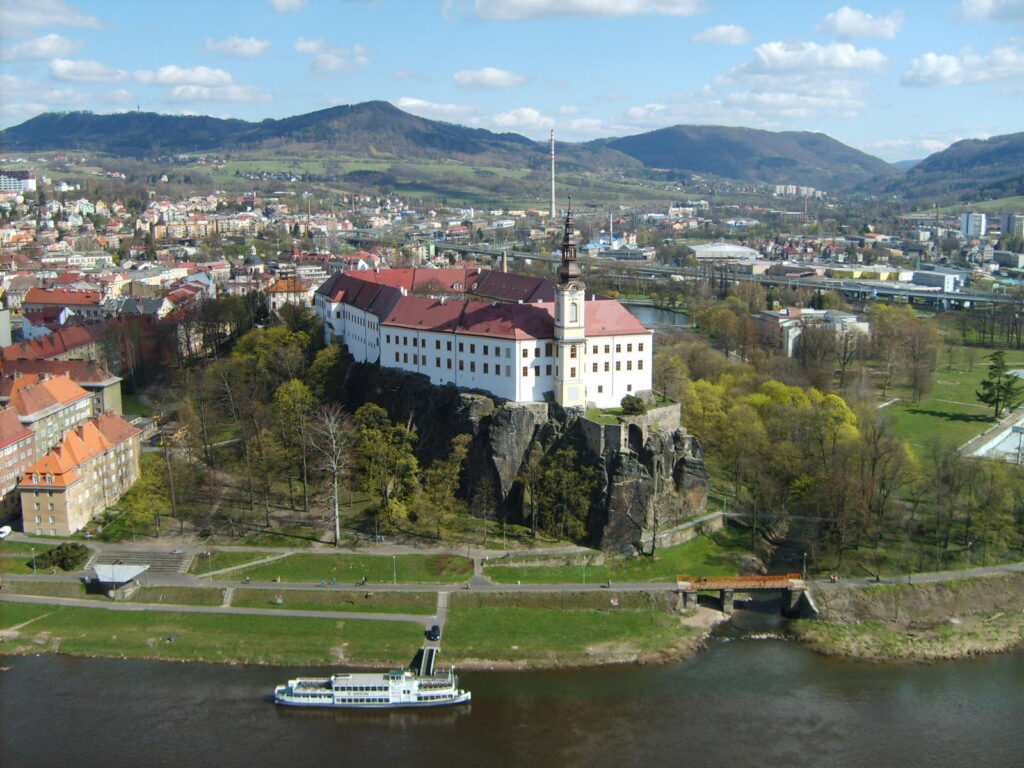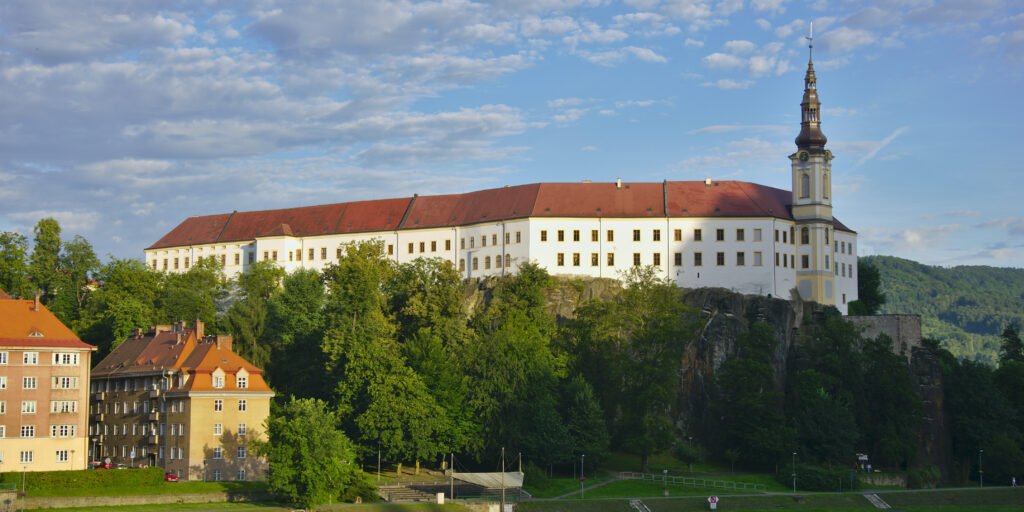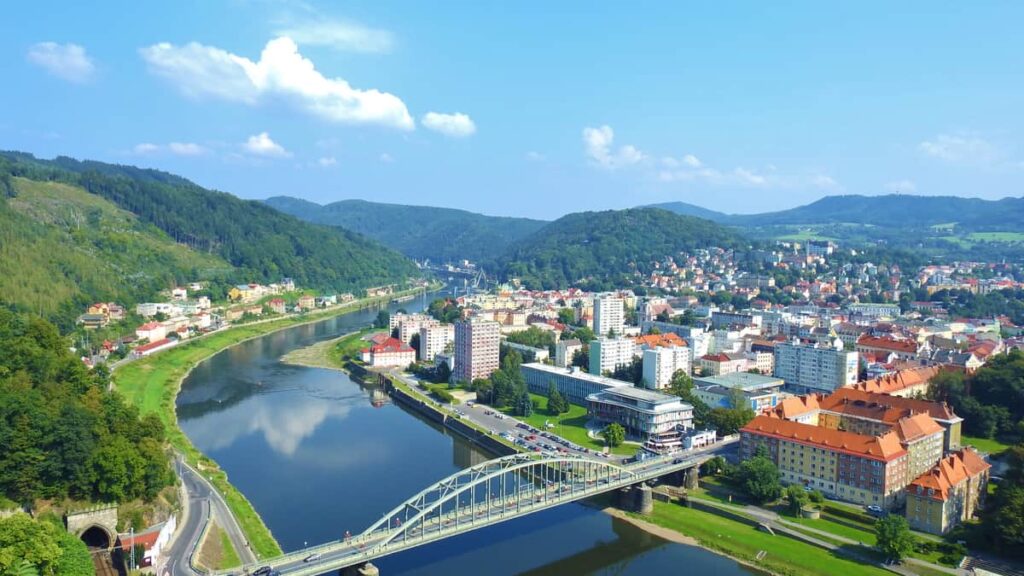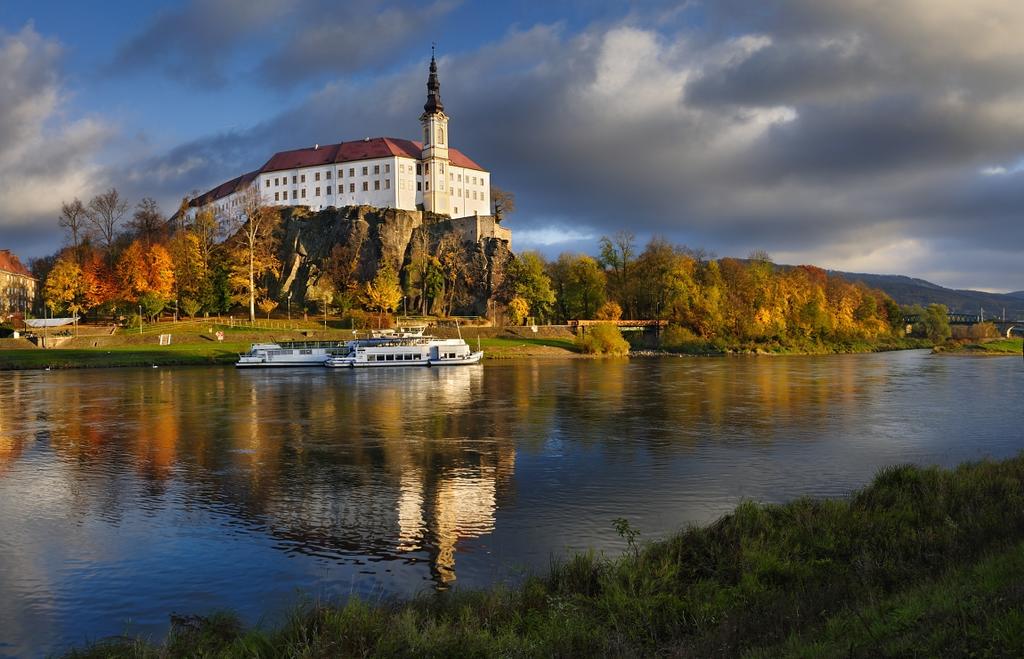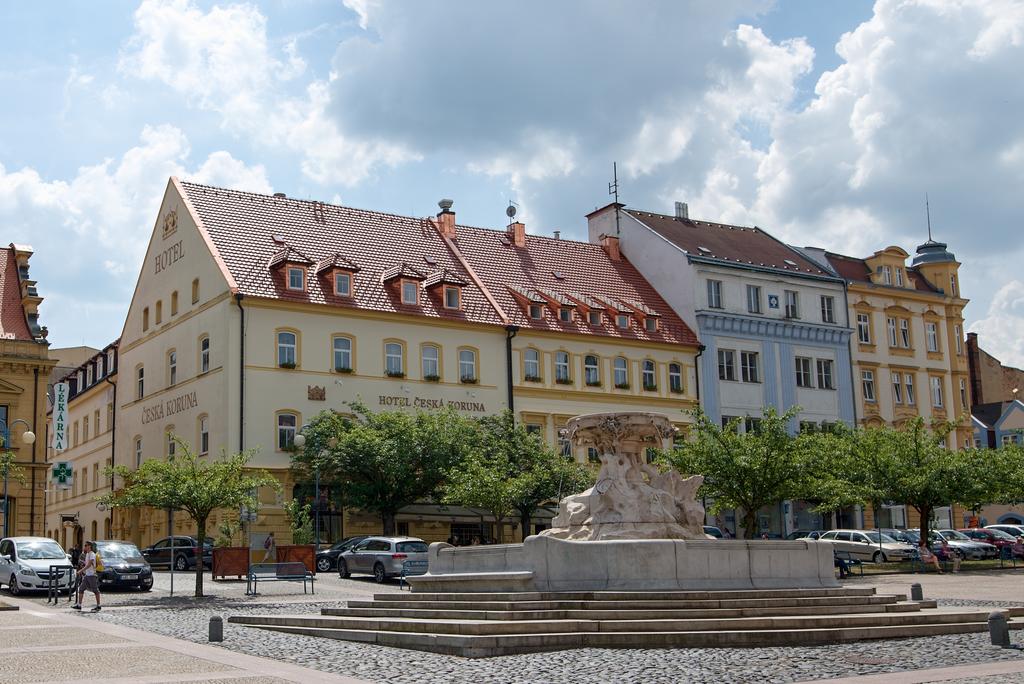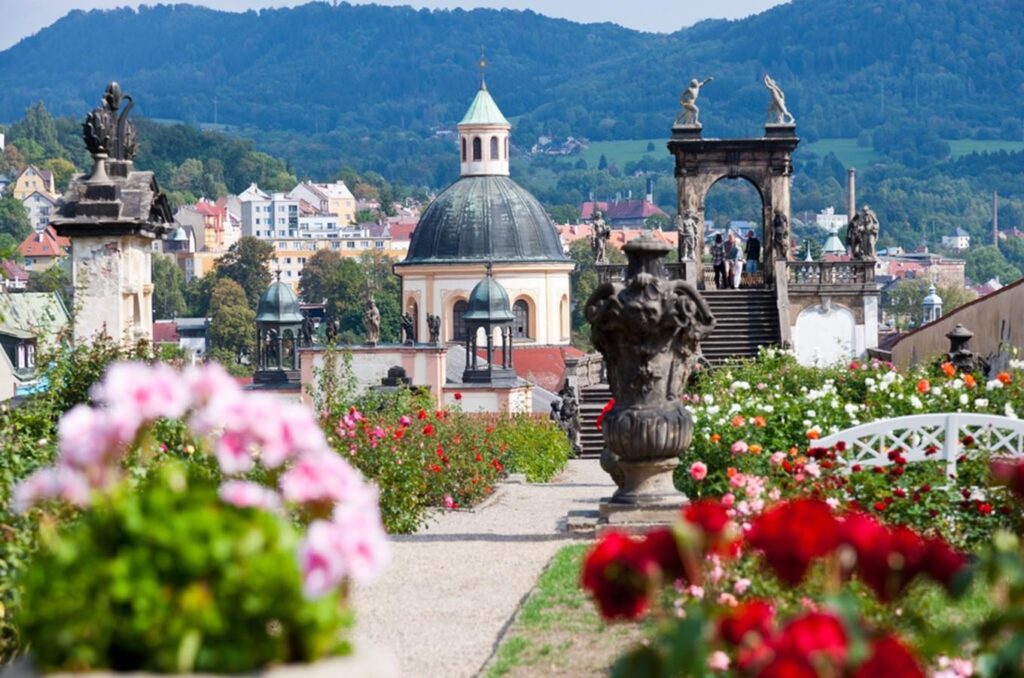Děčín is a city in the Ústí nad Labem Region in the north of the Czech Republic. It is the largest municipality and administrative seat of the Děčín District. From 1938 to 1945 it was one of the municipalities in Sudetenland, then controlled by Nazi Germany.
Děčín is located in northwestern Bohemia, at the confluence of the rivers Elbe and Ploučnice. The Elbe cut through the soft sandstone mountains of the region, and the city lies in the transition zone between Bohemian Switzerland and the Lusatian Mountains in the north and the Central Bohemian Uplands in the south.
ll cargo transported by rail, road, and water passes through the city. Products made in Děčín include sheet-metal, food, textiles, chemicals, soap, beer and preserved fish; the city is also home to printing and publishing companies.
Attractions
Synagogue, 1907
Renaissance-era bridge
Holy Rood Church, 1687–1691
“Sheep’s Bridge”, 1620
Děčín Castle, 1305
Děčín Castle
Děčín Castle is probably the most popular tourist attraction in the city. Built on a hill near the city centre and overlooking the Labe (Elbe) River, the castle has had an extremely varied history. In the twelfth century CE, it was constructed as a wooden fort, and replaced by a royal stone castle in the thirteenth century. In the sixteenth century, a grand Renaissance palace was constructed on the site, to be renovated in the Baroque style from the seventeenth century onward. A last major renovation was completed in 1803. An unusual feature of the castle is the long, straight-walled road leading up to it, known as the “Long Ride” (Dlouhá jízda).
Caspar David Friedrich sold his 1808 painting Cross in the Mountains (Tetschen Altar) to the Thuns; and Frédéric Chopin wrote his Waltz in A-flat major, Op. 34 No. 1 here in 1835.
Once the home of Bohemian kings (having been built by order of Premysl king Václav III), the castle has since functioned as the administrative centre of the Thuns. After being turned over to the Czechoslovak state in 1932, it was appropriated by occupying Germans as a military garrison during World War II. Lastly it was occupied by Soviet troops, who invaded from the east and rousted the Germans. They kept a garrison throughout the years of the Communist regime.
The Soviet Army departed in 1991, leaving the castle in a state of disrepair. In 2005 the government completed a restoration of a large part of the castle and opened it as a museum and venue for private gatherings and public events. The Thuns had removed most of the furnishings after they sold the castle to the Czechoslovak state in 1932. Much of the remaining period furniture was gradually stolen, but some pieces which had been kept at other museums were returned.
In the river Labe (Elbe) near the left bank stands a 6 m2 (64.58 sq ft) basalt stone, which is visible only when water levels are low. This is usually an indicator of drought in the region. It is known as the Hunger Stone, because in olden times, when it appeared, all boat traffic on the river had to come to a halt because of low water levels.
The interruption of trade meant that people would suffer a lack of food and other supplies. The lowest water levels have been marked on the stone since 1417, and the markings from 1616 on are still legible. The stone carries the inscription, in German, “If you see me, then cry” (Wenn Du mich siehst, dann weine).

